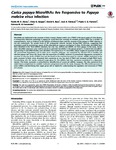Use este identificador para citar ou linkar para este item:
http://biblioteca.incaper.es.gov.br/digital/handle/item/397Registro completo de metadados
| Campo DC | Valor | Idioma |
|---|---|---|
| dc.contributor.author | ABREU, P. M. V. | pt_BR |
| dc.contributor.author | GASPAR, C. G. | pt_BR |
| dc.contributor.author | BUSS, D. S. | pt_BR |
| dc.contributor.author | VENTURA. J. A. | pt_BR |
| dc.contributor.author | FERREIRA, P. C. G. | pt_BR |
| dc.contributor.author | FERNANDES, P. M. B. | pt_BR |
| dc.contributor.other | Paolla M. V. Abreu, Universidade Federal do Espíríto Santo; Clicia G. Gaspar, Univervidade Federal do Rio de Janeiro; David S. Buss, Universidade Federal do Espírito Santo; Jose Aires Ventura, Incaper; Paulo C. G. Ferreira, Universidade Federal do Rio de Janeiro; Patricia M. B. Fernandes, Universidade Federal do Espírito Santo. | pt_BR |
| dc.date.accessioned | 2014-12-29T11:23:22Z | - |
| dc.date.available | 2014-12-29T11:23:22Z | - |
| dc.date.created | 2014 | pt_BR |
| dc.date.issued | 2014-09-25 | pt_BR |
| dc.identifier.issn | 1932-6203 | pt_BR |
| dc.identifier.other | 4413 | pt_BR |
| dc.identifier.uri | http://biblioteca.incaper.es.gov.br/digital/handle/item/397 | - |
| dc.description | MicroRNAs are implicated in the response to biotic stresses. Papaya meleira virus (PMeV) is the causal agent of sticky disease, a commercially important pathology in papaya for which there are currently no resistant varieties. PMeV has a number of unusual features, such as residence in the laticifers of infected plants, and the response of the papaya to PMeV infection is not well understood. The protein levels of 20S proteasome subunits increase during PMeV infection, suggesting that proteolysis could be an important aspect of the plant defense response mechanism. To date, 10,598 plant microRNAs have been identified in the Plant miRNAs Database, but only two, miR162 and miR403, are from papaya. In this study, known plant microRNA sequences were used to search for potential microRNAs in the papaya genome. A total of 462 microRNAs, representing 72 microRNA families, were identified. The expression of 11 microRNAs, whose targets are involved in 20S and 26S proteasomal degradation and in other stress response pathways, was compared by real-time PCR in healthy and infected papaya leaf tissue. We found that the expression of miRNAs involved in proteasomal degradation increased in response to very low levels of PMeV titre and decreased as the viral titre increased. In contrast, miRNAs implicated in the plant response to biotic stress decreased their expression at very low level of PMeV and increased at high PMeV levels. Corroborating with this results, analysed target genes for this miRNAs had their expression modulated in a dependent manner. This study represents a comprehensive identification of conserved miRNAs inpapaya. The data presented here might help to complement the available molecular and genomic tools for the study of papaya. The differential expression of some miRNAs and identifying their target genes will be helpful for understanding the regulation and interaction of PMeV and papaya. | pt_BR |
| dc.format | il., color. | pt_BR |
| dc.language | pt_BR | pt_BR |
| dc.publisher | PLOS ONE, v. 9, issue 7, p. 1-13, july 2014. | pt_BR |
| dc.subject | Carica papaya | pt_BR |
| dc.subject | Doenças | pt_BR |
| dc.subject | Mamão | pt_BR |
| dc.subject | Meleira | pt_BR |
| dc.subject | MiRNAs | pt_BR |
| dc.subject | PMeV | pt_BR |
| dc.subject | Vírus | pt_BR |
| dc.title | Carica papaya MicroRNAs Are Responsive to Papaya meleira virus Infection. | pt_BR |
| dc.type | Artigo de periódico (quando a biblioteca tiver o título do periódico) | pt_BR |
| dc.ainfo.id | 4325 | pt_BR |
| dc.ainfo.lastupdate | 2014-12-29 | pt_BR |
| dc.ainfo.depositante | Rosana Cardoso Scalco Fabris | pt_BR |
| dc.format.extent2 | 13 p. | pt_BR |
| dc.subject.nalthesaurus | Carica papaya | pt_BR |
| dc.subject.nalthesaurus | Disease | pt_BR |
| dc.subject.nalthesaurus | Meleira | pt_BR |
| dc.subject.nalthesaurus | MiRNAs | pt_BR |
| dc.subject.nalthesaurus | PMeV | pt_BR |
| dc.subject.nalthesaurus | Virus | pt_BR |
| dc.identifier.doi | 10.1371 | pt_BR |
| Aparece nas coleções: | Memória Técnica do Incaper  | |
Arquivos associados a este item:
| Arquivo | Descrição | Tamanho | Formato | |
|---|---|---|---|---|
| Carica-papaya-microRNAS-Are-responsive-to-papaya.pdf | 2,68 MB | Adobe PDF |  Visualizar/Abrir |
Os itens no repositório estão protegidos por copyright, com todos os direitos reservados, salvo quando é indicado o contrário.
